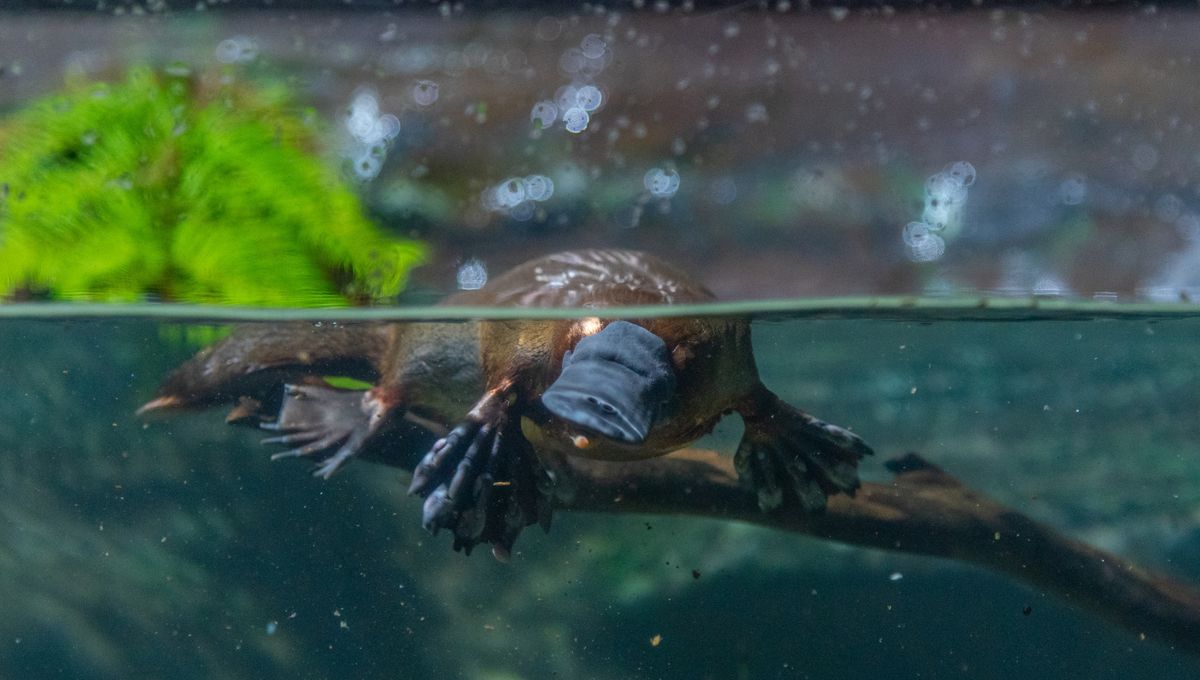
Sex chromosomes have been in the news a lot recently thanks to speculation about Olympic athletes, but a new discovery shows how far we are from understanding how exactly they work. In particular, the findings demonstrate that the animal kingdom has found a variety of ways around a critical problem sex selection would otherwise pose for health.
Humans, like most mammals, use an XY sex selection system where – in most cases – females have two X chromosomes and males have an X and a Y. Even ignoring the cases that break this pattern, this posed a biological challenge when it developed. The X chromosome carries far more genes than the Y, many of which aren’t sex-specific. If both Xs were fully expressed, female mammals would get a double dose of the proteins these genes code for, with disastrous consequences.
Almost 40 years ago, co-author of the study Professor Jenny Graves of La Trobe University found mice and humans with XX chromosomes avoid this through non-production of the mRNA that codes for these genes. One X chromosome is “silenced” as a result. Consequently, they get the same dose of X chromosome-coded proteins as those with XY chromosomes. “As the genes were silenced by their failure to make RNA, the control of dosage compensation was assumed to be at the level of RNA only—not at the level of making proteins,” Graves said in a statement.
When studies showed hens and roosters have unequal levels of mRNA from their sex chromosomes, it was assumed that they would have similarly unmatched proteins, and perhaps matching protein levels were not so important. Now, research shows that chickens do have methods to compensate so their protein doses match – they just do it differently.
Moreover, this is not a simple split between birds and mammals; the platypus uses the same method as chickens, despite very different chromosomes.
Chickens, like other birds and some reptiles, have a ZW sex selection system. Here, it is males that have two copies of the same chromosome, the Z, while females have a Z and a W. Nevertheless, the potential problems are the same – a risk of protein doubling, although this time in male birds.
Previous work had shown that chickens do not silence one entire Z chromosome the way humans do with an X. Instead, silencing occurs on a gene-by-gene basis. More puzzlingly, however, researchers have now shown that irrespective of mRNA production, male and female chickens produce the same levels of protein, other than where needed for reproduction.
This had not been noticed previously because, somewhat surprisingly to non-biologists, it’s much easier to track the amount of mRNA in a cell than the resulting protein levels. “Proteins are complicated,” Graves told IFLScience. “RNA is pretty easy to measure these days, we can get a good readout on how much there is in a cell.” Nevertheless, protein measurements have improved recently to the point other members of the team were able to do the necessary chicken checks.
“The findings suggest that dosage compensation is a crucial process in species with differentiated sex chromosomes to ensure that protein levels are balanced,” said Dr Paul Waters of the University of New South Wales in the statement.
The work also proves that compensation can occur either when transcribing mRNA or when translating to proteins, and both can be combined, as chickens have done.
Although most mammals use silencing at the transcription level, rather than when it comes to protein production, previous research co-authored by Graves demonstrated placental mammals and marsupials have developed different but overlapping methods to achieve this silencing.
The new study complicates the mammalian picture further, showing that platypus also partially overproduce mRNA from their repeated chromosomes, but balance this with lower protein production. Platypuses have sex selection chromosomes that are as unusual as they are. Instead of either XX or XY chromosomes, males have five of each, while females have five pairs of Xs, all of which need to line up.
Graves told IFLScience she suspects the common ancestors of chickens and platypus similarly balanced their dosage partly at the transcription level and partly at translation. However, she admits no other bird species have been tested in this way so far, so further complications may arise. The paper notes evidence of variation among reptiles. Komodo dragons do not appear to reduce transcription of their Z chromosomes at all, while the green anole (which uses XY chromosomes) does all the dose compensation at transcription, like us.
The way most mammals do it; “Is probably more efficient,” Graves told IFLScience, but there could be benefits to the flexibility of mixing and matching. She’s intrigued that the egg-laying platypus uses the same method as birds, and wonders if silencing at transcription is particularly applicable for live births.
Failing to dose compensate is not always disastrous. Graves told IFLScience that in one silencing experiment, it was found that; “Only about ten percent of the genes are dose sensitive.” However, there can be disastrous consequences from that ten percent if protein production does double, including failure to form certain bones.
Graves told IFLScience that the discovery that there are other ways to achieve dosage compensation could also be relevant for cases where a non-sex chromosome is doubled, most famously in Down Syndrome.
Moreover, Graves noted; “X chromosome inactivation is the model for epigenetic silencing that is affected by environmental circumstances. We always thought it was at the transcriptional level, but maybe not.” With pollution and stress sometimes causing undesirable gene-silencing, better knowledge of how this can occur might have valuable consequences.
The study is published open access in Proceedings of the National Academy of Sciences.
Source Link: Chickens and Platypuses Rewrite Our Understanding Of Sex Chromosome Expression